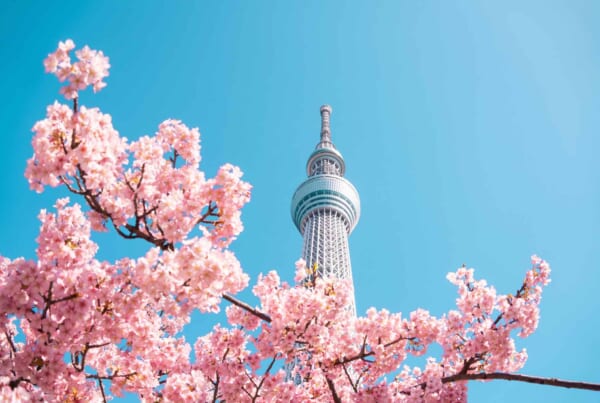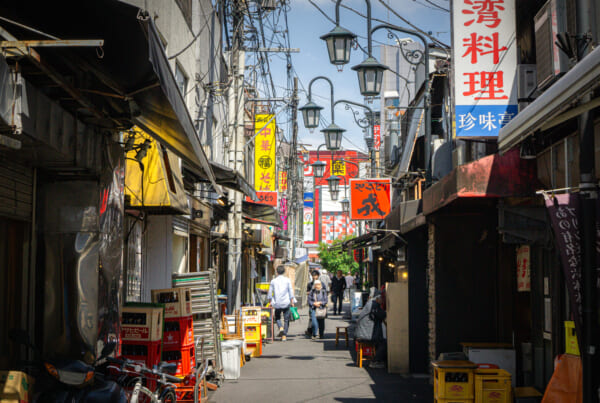Japanese gardens are designed to be contemplated, like true works of art. They offer a glimpse into nature and are often heavily influenced by the principles of symbolism and miniaturization. They integrate aspects of the external environment into the garden, such as a mountain or even buildings.
But is it possible to choose 5 of the most beautiful Japanese gardens in Japan?
1. Kenroku-en Garden, Kanazawa, Ishikawa Prefecture
Kenroku-en (兼六園), or literally the ‘garden of six angles’, has been maintained by the Maeda family, descendants of the aristocracy of Kaga (now Ishikawa and Toyama). The name refers to the six aspects that are deemed essential elements in the perfect Japanese garden: space, serenity, virtue, scenery, maintenance, and water.
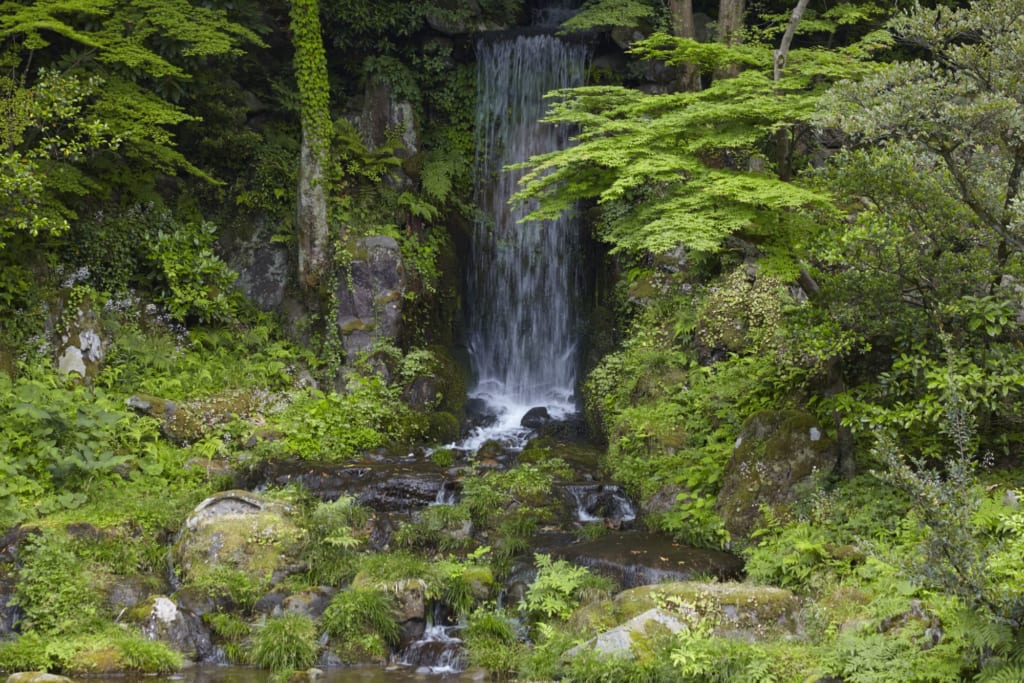
In this garden, situated in Ishikawa Prefecture (石川県), you can gaze out over Kasumigaike (霞ヶ池), an artificial pond, from the hills or the pavillions and see the stone lantern centrepiece that has become a symbol of Kenroku-en. According to beliefs, a wise, reclusive figure used to live on the island in the pond’s centre and came to symbolise longevity and prosperity.
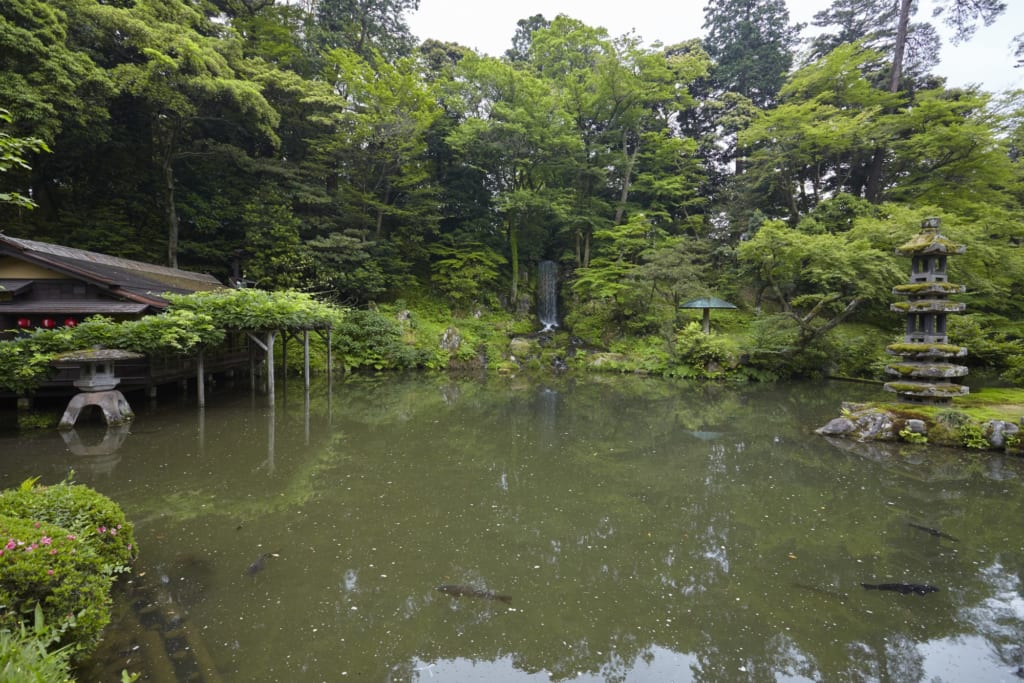
Admission to the Kenroku-en Japanese Gardens
- Visit Kanazawa Website Official Website
- Price: 100 Yen (6-17 years old ), 320 Yen (adults), free for those over 65 years old.
- Opening Hours: from 07:00 – 18:00 (1st of March to 15th October) and from 08:00 – 17:00 (16th of October to the end of February)
- Open all year round.
- Access: The garden is a 20-minute walk from Kanazawa train station (金沢駅). Kanazawa can be reached in around 2 1/2 hours by bullet train from Tokyo.
2. Kairaku Garden, Mito, Ibaraki Prefecture
Kairaku-en (偕楽園), in Ibaraki Prefecture (茨城県), opened in 1842 and was designed by Nariaki Tokugawa. Built for Lords, warriors, as well as the common visitor, it combines a modern park and a Japanese garden. It owes some of its magnificence to its cedar forest, bamboo groves and beautiful azaleas. What’s more, it is renowned for its famous plum trees and its 3000 flowers, which bloom in the spring.
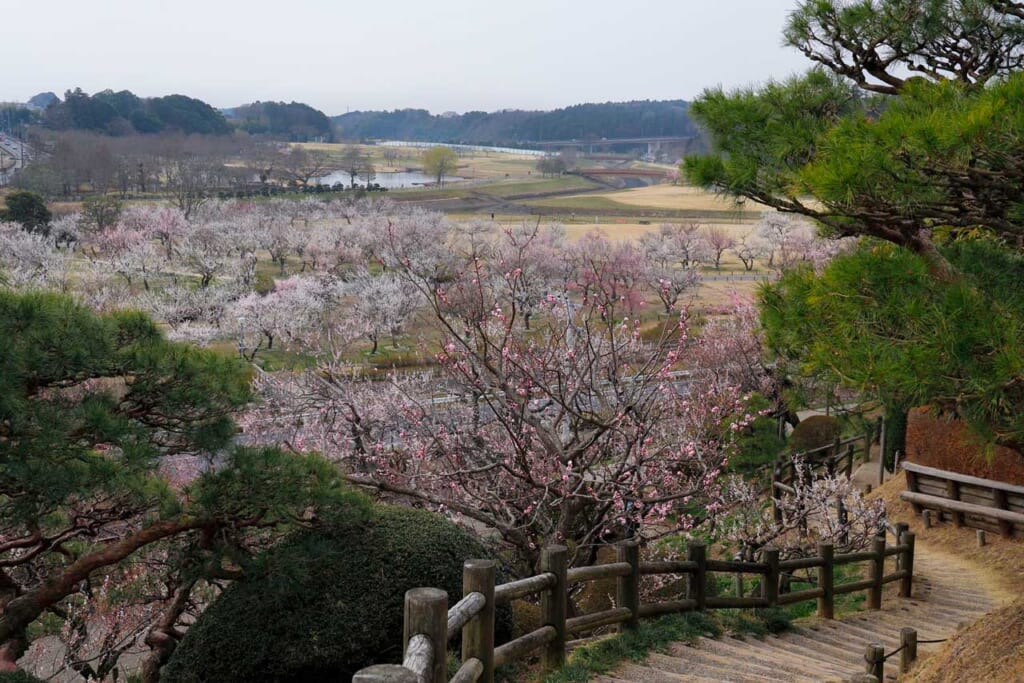
Don’t miss the third floor of Kobuntei House (好文亭), which offers a glimpse into the way of life of feuding lords and gives visitors a superb view of the gardens.
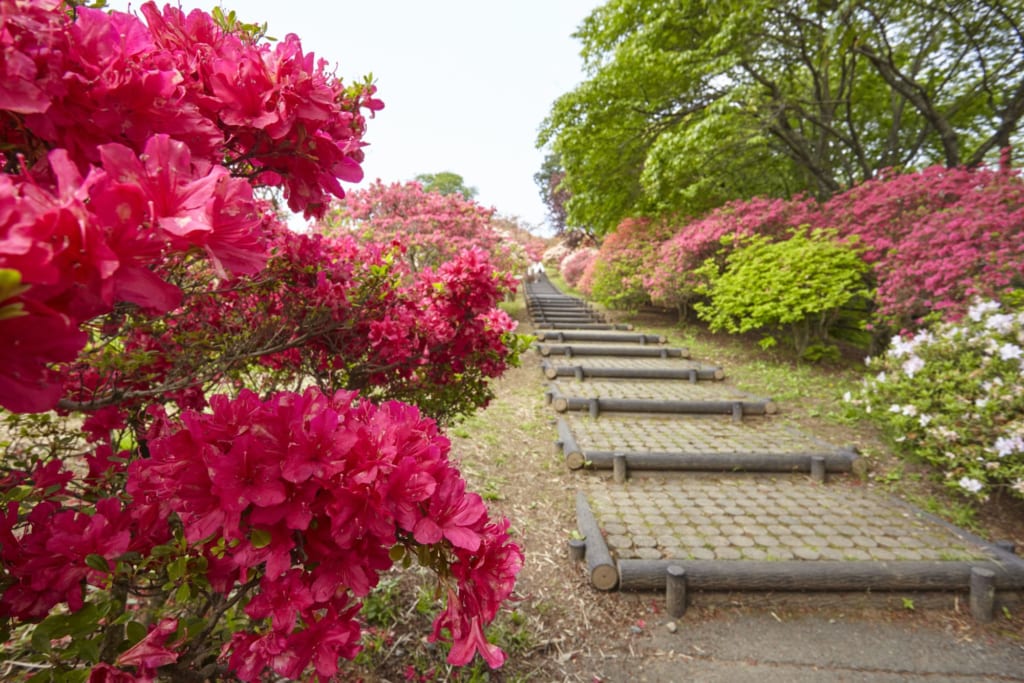
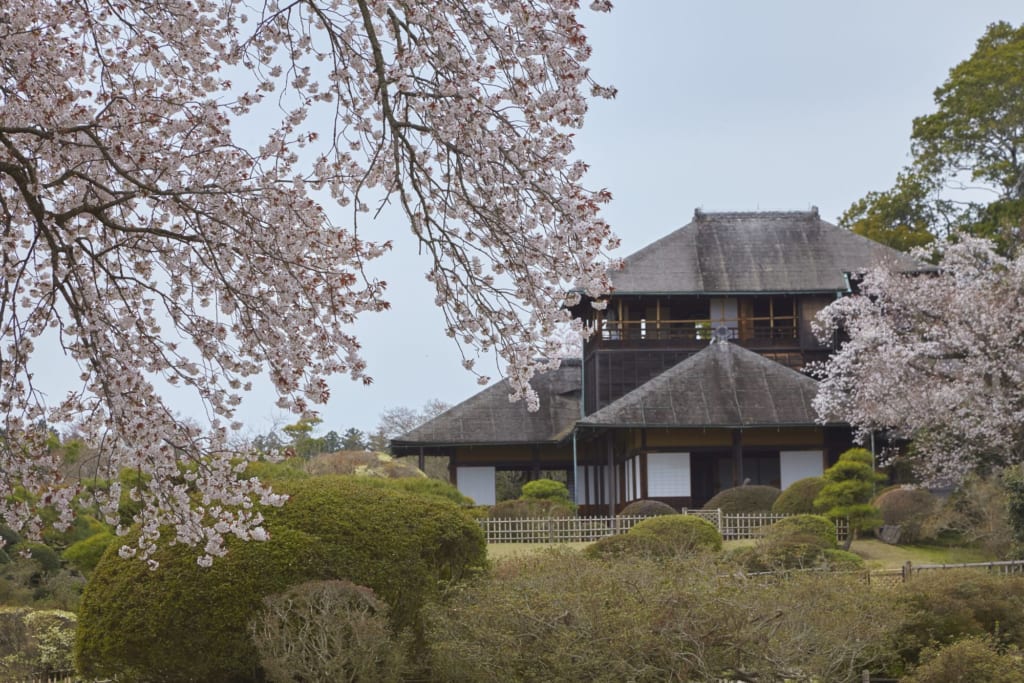
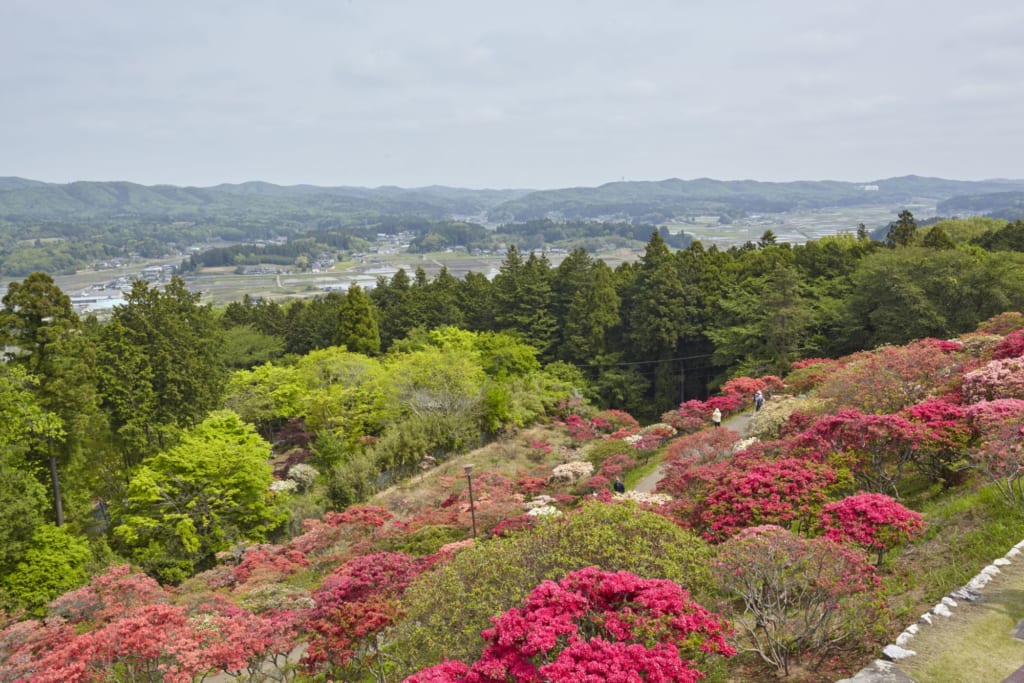
Admission to the Kairaku Japanese Gardens
- Mito City Official Website
- Price:
- For the garden: 300 Yen for adults and high school students, 150 Yen for children and those over 70 years of age. The entrance is free before 9:00 am and for residents of Ibaraki Prefecture.
- For Kobuntei House: An additional 200 Yen on ticket price for adults and high school students, and an additional 100 Yen for children and those over 70 years of age.
- Opening Hours: 06:00 – 19:00 (09:00-17:00 for Kobuntei House) from mid-February to end of September, and 07:00 – 18:00 (09:00 – 16:30 for Kobuntei House) from October to mid-February.
- The garden is open all year round but Kobuntei House is closed 29th – 31st December).
- Access: The JR Hitachi-Tokiwa line connects Tokyo and Mito in around 1 hour and 20 minutes and it’s just a 30-minute walk from Mito Station (水戸駅) to the garden.
3. Koraku-en Garden, Okayama, Okayama Prefecture
Built in 1700 at the request of Ikeda Tsunamasa, Koraku-en (後楽園), in the prefecture of Okayama (岡山県), is one of the only gardens that offer a glimpse into history with a collection of paintings from the Edo period, as well as Ikeda family registers.
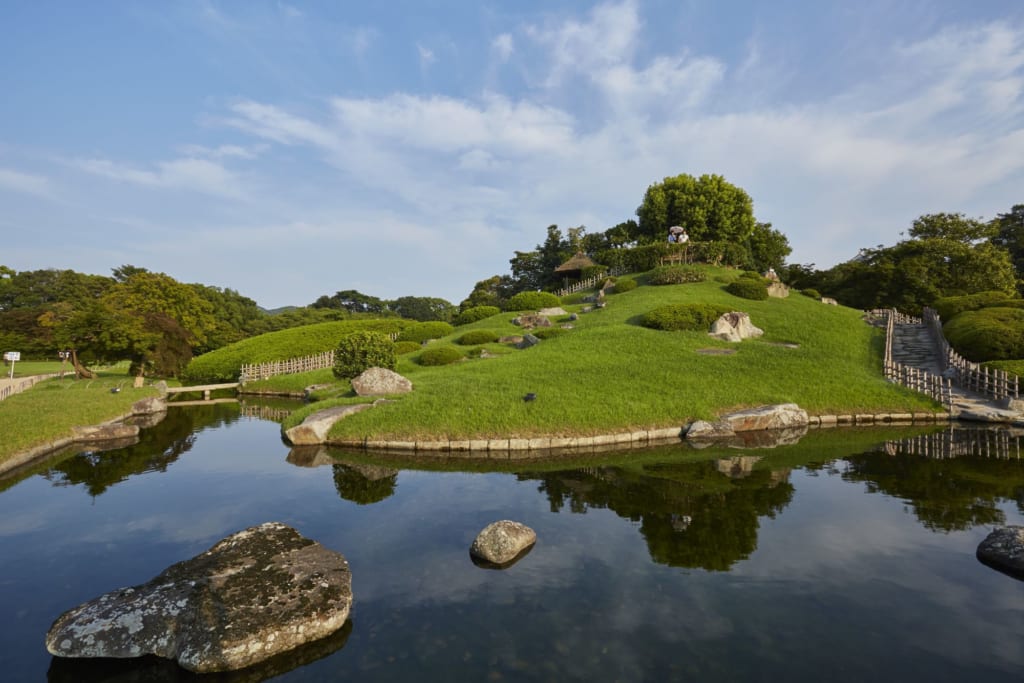
The garden reveals, amongst other things, an archery range and a bamboo forest. You can also experience three types of symbolic fauna in Japan: plum trees, cherry blossoms and maple trees.
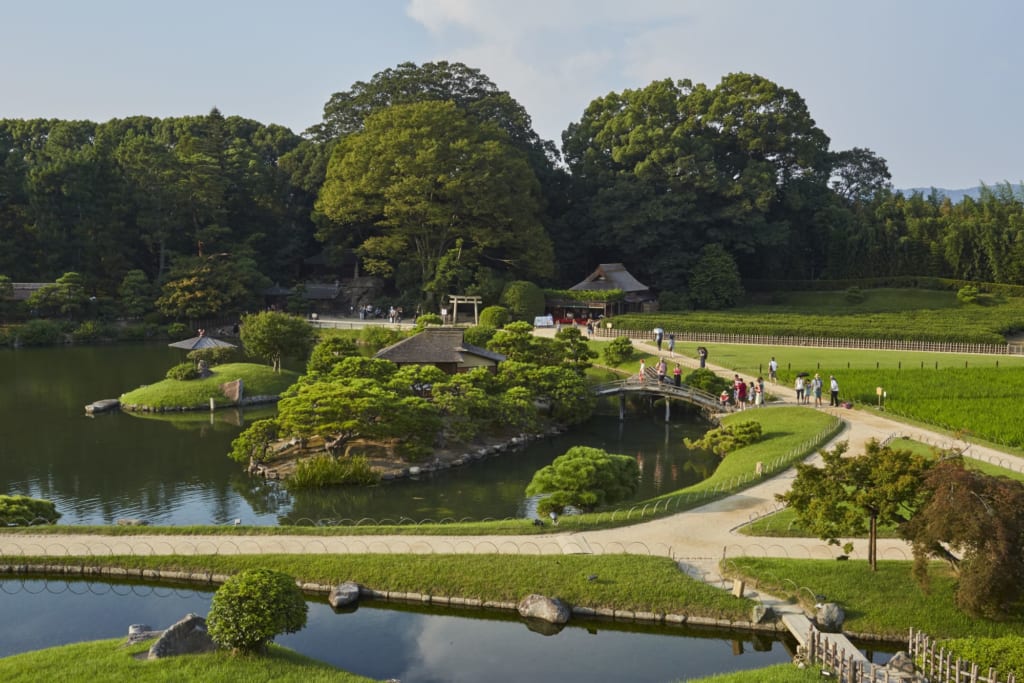
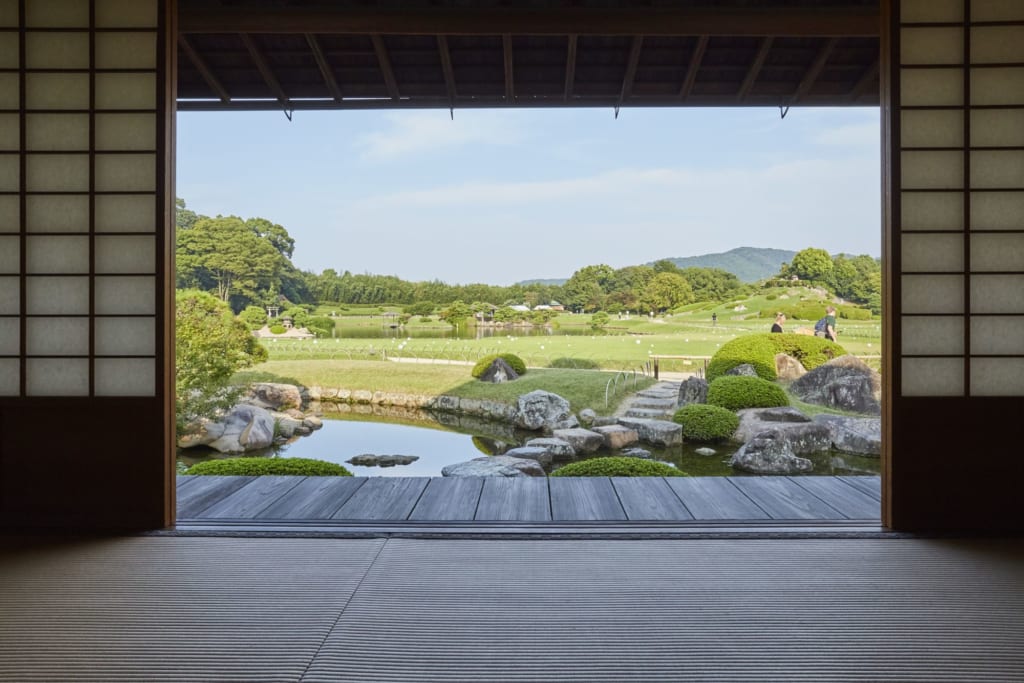
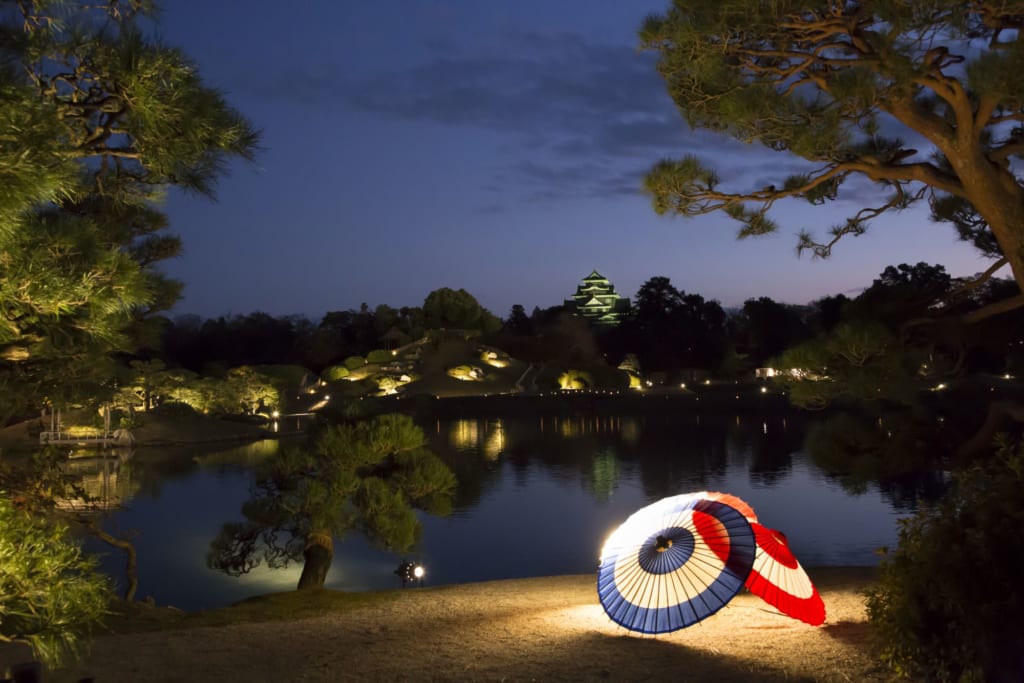
Admission to the Korakuen Japanese Gardens
- Okayama Prefecture Official Tourism Guide Website
- Price: 410 Yen for adults, 140 Yen for those over 65 years of age and free for children and students (except university student).
- Opening Hours: from 07:30 – 18:00 from 20th March to the end of September and from 08:00 – 17:00 from 1st of October to 19th of March.
- Open all year round.
- Access: From Shin-Osaka station (新大阪駅), take the Shinkansen ‘bullet’ train to Okayama in around 45 minutes and a 25-minute walk to the garden.
4. Ritsurin Park, Takamatsu, Kagawa Prefecture
From 1620 to 1875, several families began creating Ritsurin Park (栗林公園), a vast Japanese garden which was started by the Ikoma family. The garden is now considered one of Japan’s national treasures and earned the label of “exceptional landscape,” and earned three stars in Michelin’s The Green Guide Japan.
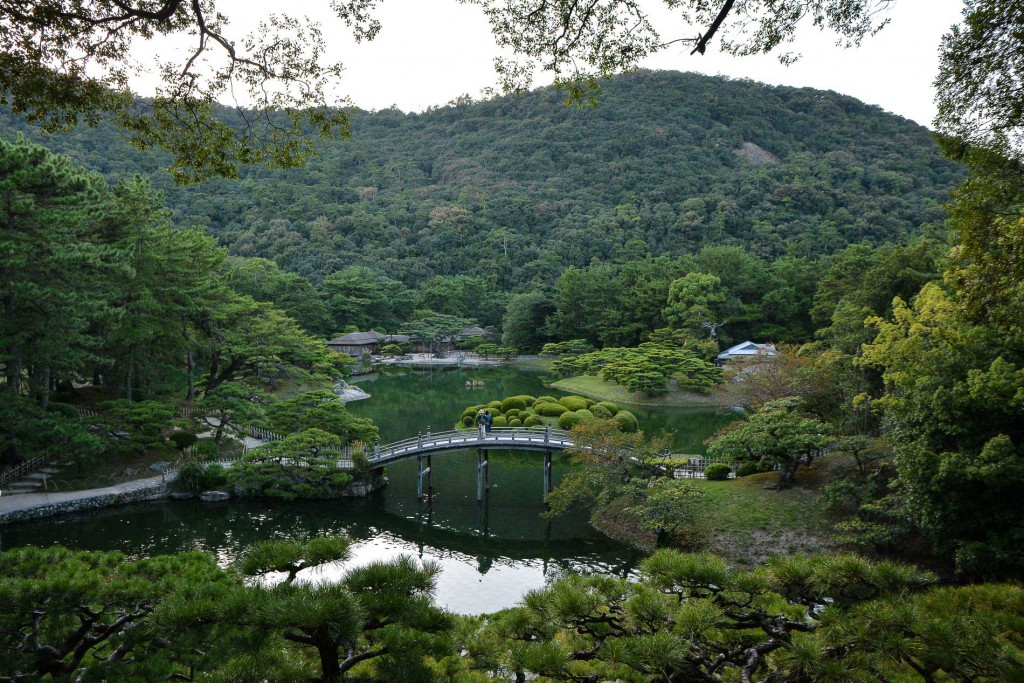
This 75-hectare park is primarily known for its bonsai and features 13 hills, six ponds and numerous rockeries that have been perfectly curated to face Mount Shiun. If you are going to Takamatsu in Kagawa Prefecture (香川県), Ritsurin Park is less than 10 minutes away by train and certainly worth a visit
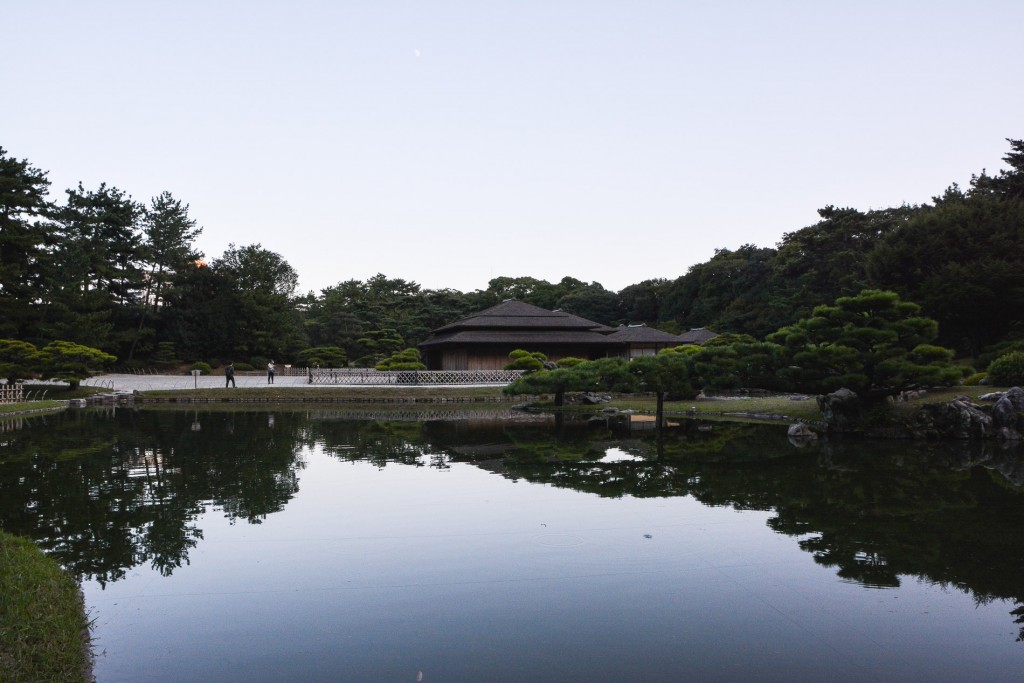
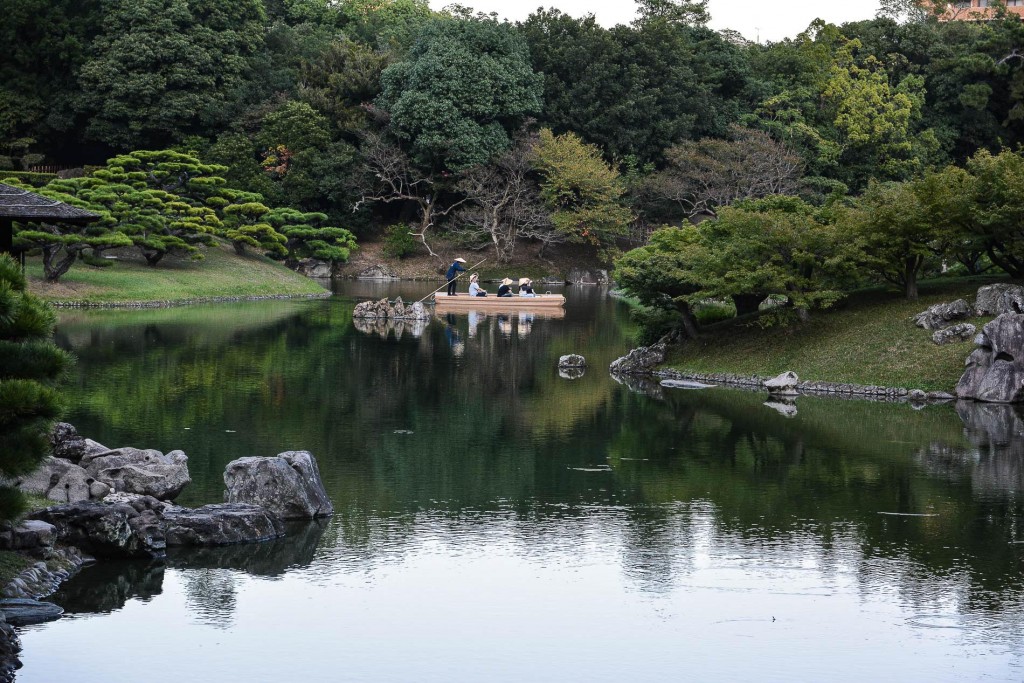
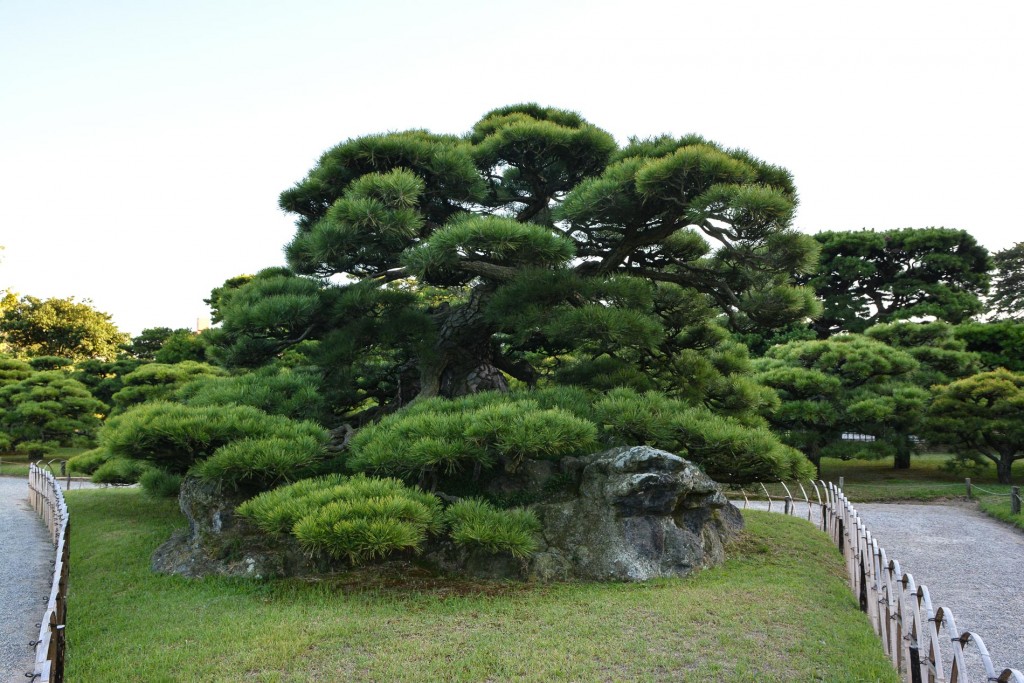
Admission to the Ritsurin Japanese Gardens
- Visit Kagawa Official Tourism Website
- Price: 410 Yen for adults and high school students, 170 Yen for children (free for babies).
- Opening Hours: from 05:30/07:00 – 17:00/19:00 depending on the month of the year (you can find more precise information on Visit Kagawa Official Tourism Website).
- Open all year round.
- Access: Takamatsu (高松駅) can be accessed from Osaka easily by train. First, take the Shinkansen from Shin-Osaka Station (新大阪駅) to Okayama in about 45 minutes and then transfer to the JR Seto-Ohashi Line to Takamatsu which takes 54 minutes. It’s a short walk from Takamatsu station to the park but you can also ride the JR Kotoku Line for 2 stops to the park’s station, Ritsurinkoen-Kitaguchi.
5. The Garden of Adachi Art Museum, Yasugi, Shimane Prefecture
The garden of Adachi Art Museum (足立美術館) spans an area of more than 15,000 square metres and is made up of various themes. The founder, Adachi Zenko, devoted himself to the garden until his passing at 91 years of age. This devotion was recognized by being ranked first in the Japanese gardens category of the American magazine, Journal of Japanese Gardening and has been awarded three stars by the Michelin Japan guide.
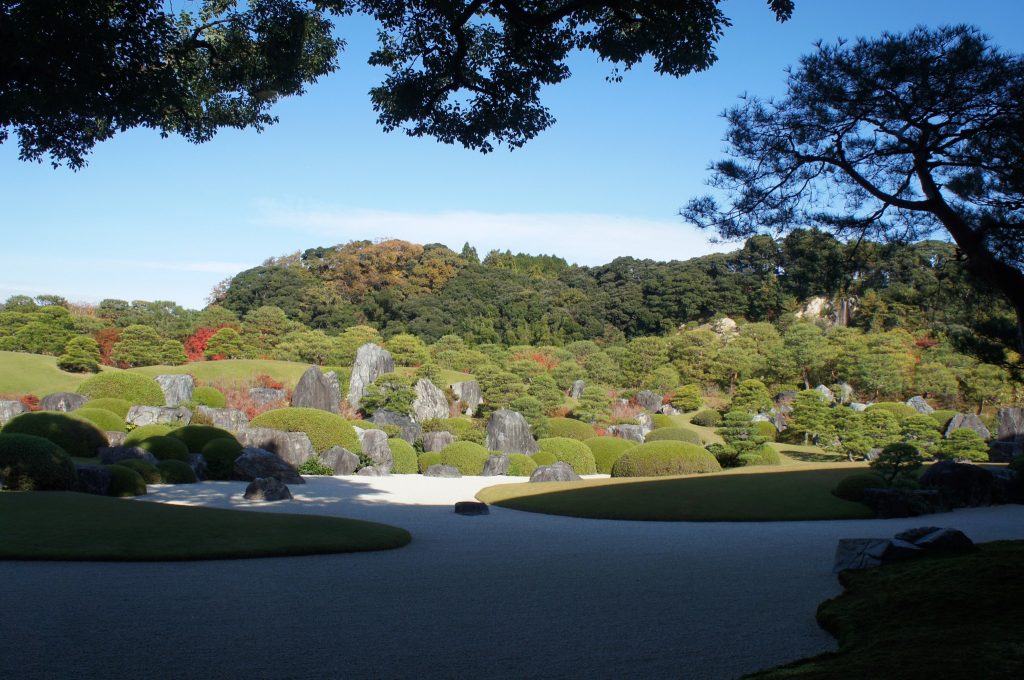
The most significant characteristic of this garden in Shimane Prefecture (島根県) is that it is part of the museum. In fact, you can only gaze out at the garden through the windows of the museum (except the garden of Juryu-an Tea Pavilion where you can walk around).
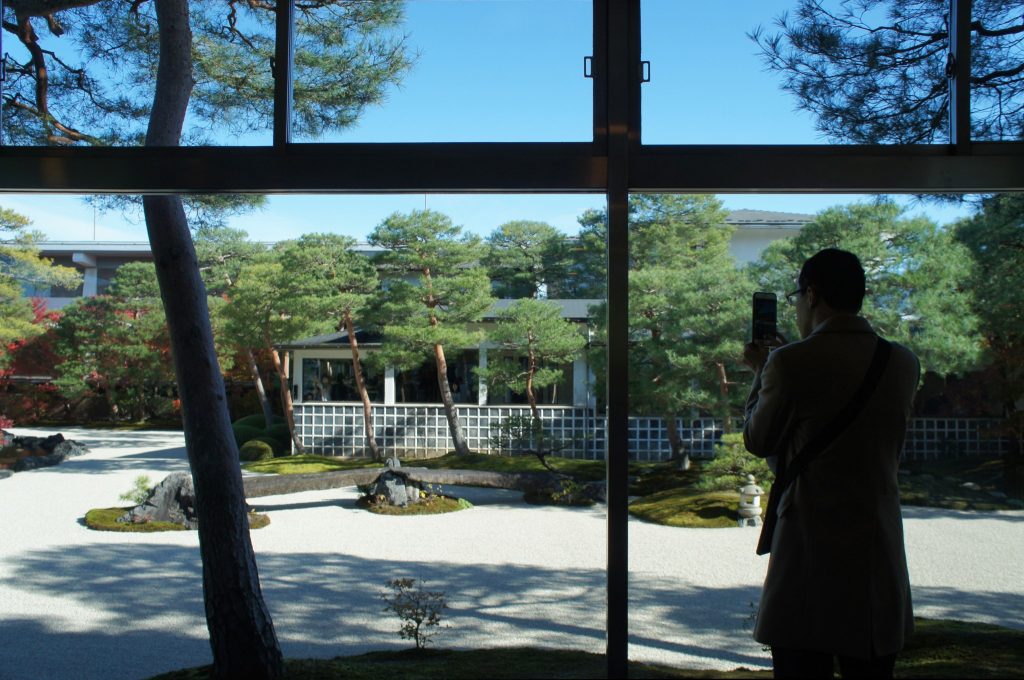
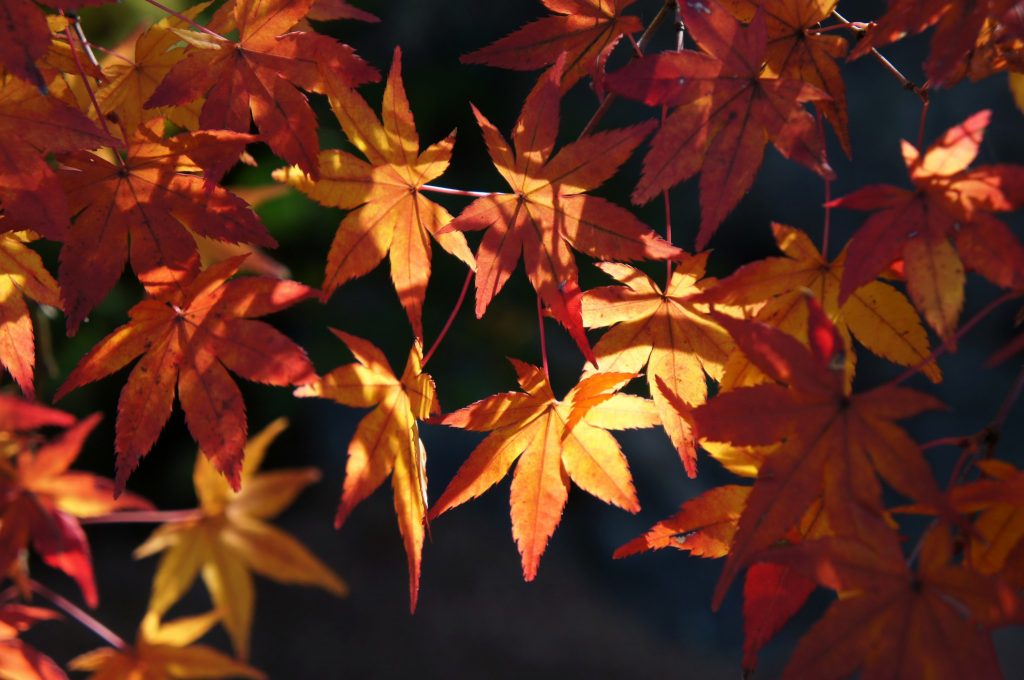
Hours and Admission to the Adachi Art Museum
- Adachi Museum Official Website
- Price (includes access to the garden and the museum): 2,300 Yen for adults, 1,800 Yen for University students, 1,000 Yen for high school students and 500 Yen for children.
- Opening Hours: 09:00 – 17:00 from October to March and 09:00 – 17:30 from April to September.
- Museum open all year round (apart from the annexe which closes a few days a year)
- Access: From Okayama Station (岡山駅), take the JR Yakumo line to Yasugi Station (安来駅) which takes 2 hours and 25 minutes. From the station, there is a community bus to the museum which takes about 20 minutes.
Visiting the top 5 most beautiful Japanese gardens in Japan will take you into the heart of Japanese culture. These places are full of poetry and you will truly feel closer to nature than ever before.














